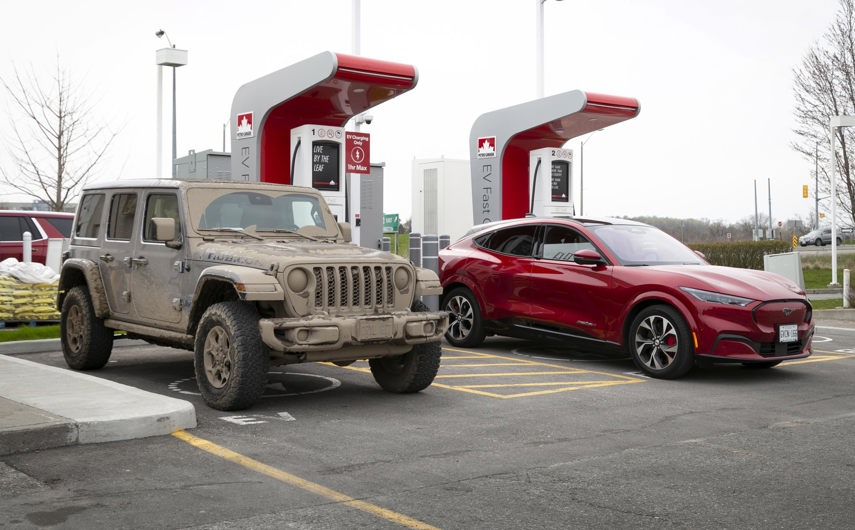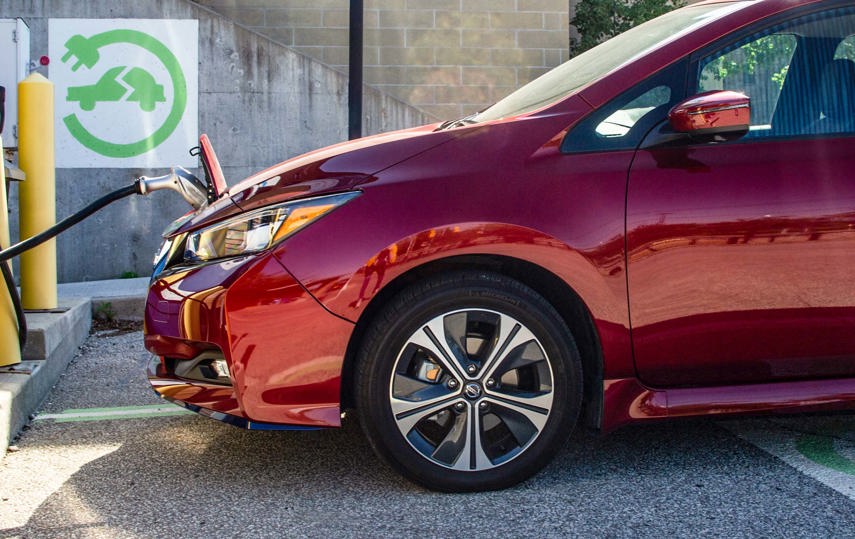Update (2021-10-22): An earlier version of this column stated that Toyota Canada transported a Mirai via flatbed truck from Bowmanville, Ont., to Quebec City and back in order to refill its hydrogen tank for media testing. In fact, the car was shipped to and from Montreal.
Despite occasional assumptions to the contrary, as an auto writer, I’m very much in favour of a shift to zero-emissions vehicles.
Slow though it might be, the move to electrification or something like it is a necessary one – except we have a massive amount of catching up to do if our national infrastructure is to keep up with government mandates aimed at curbing the sale of emissions-generating cars, trucks, and SUVs. The federal government has set such a plan in place, with a goal of having 100 per cent of new passenger vehicle sales be of the zero-emission variety by 2035. It’s not a particularly ambitious target, except for one major wrinkle: we desperately need publicly accessible charging options that are as abundant as they are reliable. Currently, neither of those is the case, and that poses a serious problem.
Now, Rome wasn’t built in a day, and neither was Canada’s vast landscape of traditional gas stations. In fact, there were some 12,000 stations across the country as of the end of last year, according to an industry census conducted by consulting firm Kalibrate. By contrast, Natural Resources Canada (NRCan) data shows a little more than half that many EV charging stations in – 6,246 in total covering Levels 1 and 2, and DC fast-charging.

That number might seem reasonable at first blush; remember, mass-market EVs have only existed for the last decade or so. But not all chargers are created equal. Take Tesla, for example. There are 122 of the brand’s fast-charging stations across Canada, according to its website; but those can only be used by Tesla models. And while enigmatic CEO Elon Musk claimed this past summer that the chargers would be usable by “other EVs later this year,” there’s been no word at the time of this writing of when that will happen – or if it will even be the case in Canada.
The use of proprietary connectors and charging capacities runs counter to how conventional fuelling works – and that’s going to require a rewiring not just of EVs and charging stations, but our brains. Right now, if I need to gas up, my options are plentiful. Sure, not all stations sell diesel, which is problematic for my personal car; and high-octane stuff isn’t available everywhere, either. But it’s not as if I can only stop at, say, a Shell station while others have to pop into Petro-Canada.
It’s something of a surprise that Petro-Canada is currently the only national gas station chain to incorporate EV charging into its stations, though if I were a betting man I’d wager it won’t be the last, either. That makes the idea of using one of its stations to top up at least somewhat familiar – that is, if there’s one close by. The two closest Petro chargers to my place are both about 25 km away, and I happen to live in the heart of the Greater Toronto Area (GTA).

There are others out there, too, including Electrify Canada – the Volkswagen-owned network of fast-chargers that’s been slow to roll out. While the pandemic has no doubt had an impact, just 29 Electrify Canada locations were online at the time of this writing, and all of them exist in British Columbia, Alberta, Ontario, and Quebec. That leaves gaping holes in the map where EV adoption may be slow in the first place, sure; but it’s certainly not going to do much to encourage purchases, either.
Now consider that there are usually only a few chargers per location, they’re often occupied by other users, they can be broken, or that many require different apps and memberships. On top of that, many require accounts pre-loaded with funds to pay for charging sessions rather than using credit card readers – something even modern vending machines have. Both Electrify Canada and Petro-Canada offer such simple payment, but many others don't. It’s all a little dizzying and not especially attractive for those who might be skeptical of the switch to electrification to begin with.
It’s not just EV charging, either. Hydrogen fuel cell vehicles (FCVs) represent another enticing zero-emissions option, yet fuelling them is as difficult as finding them. For starters, only two have made it to Canadian shores: the Hyundai Nexo crossover, and the Toyota Mirai sedan. Then there’s the limited number of retail stations, with five in total – one on Vancouver Island, three in Greater Vancouver, and another in Quebec City. So difficult are these stations to find that Toyota Canada took to shuttling a Mirai overnight via flatbed tow truck from Bowmanville, Ont., to Montreal and back for a two-day media testing event – a move that runs counter to the zero-emissions concept in the first place.
The federal government isn’t naive to this shortcoming of charging and fuelling stations. That’s why it launched the Zero Emission Vehicle Infrastructure Program (ZEVIP) – a five-year project worth as much as $280 million in public funds in the hopes of boosting the number of such stations. The program will provide as much as 50 per cent of the funding for these charging public projects, with approved proposals to be announced in the new year.
That’s all good news, but then it comes back to the question of reliability. We’ve all been to gas stations that were out of service or with a pump or two that was down temporarily, but the frequency in which I’ve experienced malfunctioning EV chargers in recent years is alarming. And for a building-dweller like me who doesn’t have power available in my parking garage, those public stations are my only option to charge.
None of this is to present a story of pessimism, but it is a call to action. Let’s unlock those Tesla chargers to the masses, extend Canada’s so-called electric highway, and expand the availability of hydrogen fuelling beyond the borders of British Columbia and Quebec. Remember: it was in 2007 that the iPhone was first introduced, the TV show Mad Men hit the air, and Tim Tebow won the Heisman Trophy. Fourteen years really isn’t that long, and 2035 is just around the corner.

